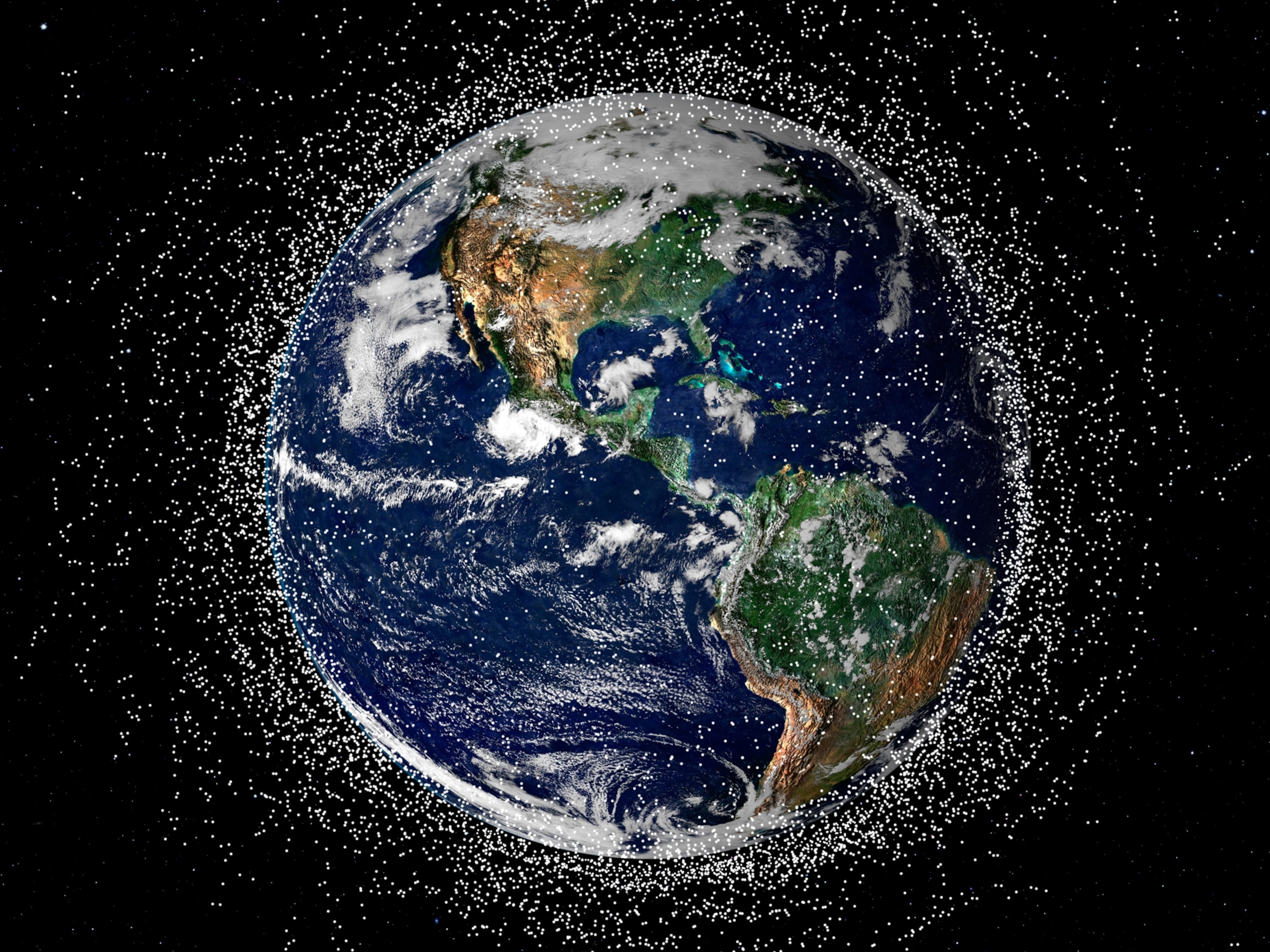
Are billionaires' space travel plans out of touch with reality?
The space tourism industry is developing–but travelers may not be interested.
In 2001, American businessman Dennis Tito became the world's first space tourist to pay his way. He spent 20 million dollars for almost eight days with the crew on a Russian spacecraft orbiting Earth 128 times. During the next decade, six other space tourists followed with tickets reaching 40 million dollars.
In the years since, some private companies have been working to reduce the cost of space tourism. In 2018, Elon Musk’s SpaceX launched a Tesla using a heavy-lift, reusable rocket, a trial run for eventually sending crews to space stations. Amazon CEO Jeff Bezos has joined the space race; his company, Blue Origin, also develops new infrastructure to lower the expenses of space travel. Not one to be left behind, Richard Branson’s Virgin Galactic reportedly sold around 650 tickets for $250,000 apiece for a suborbital passenger flight that has yet to happen. [Watch Elon Musk freak out over the Falcon Heavy launch.]
While the momentum for space tourism has accelerated, the number of potential travelers remains unclear. Which leaves the question: How many people want to visit the final frontier?
A recent Pew Research Center survey found most people lack the desire to orbit Earth. The research indicates that 58 percent of surveyed U.S. adults have no interest in traveling by spacecraft someday. Their stated concerns ranged from expensive costs, health worries, and general fear.
Around 48 percent of Americans claimed an eagerness to visit space, but their rationale seems a bit wobbly. The survey reports that the most common interest was to “experience something unique.”
Interest aside, intrepid billionaires continue to pursue their otherworldly dreams. Blue Origin and Virgin Galactic aim to take tourists on short, suborbital flights to touch the edge of space in the next year. More ambitiously, Elon Musk hopes to colonize Mars.
Airlines also see opportunities in space for the tourism industry. Japan Airlines and ANA have invested in startups specializing in orbital technology, and space tourism companies, like Space Adventures that brokered Dennis Tito’s trip, promise new spaceplanes and zero-gravity flights. Timelines for these innovations are nebulous. [Learn more about the future of spaceflight.]
Despite this promising progress, many remain skeptical. When asked to guess what the future holds for space tourism, only half the U.S. respondents in the Pew survey believed routine space travel will actually happen in the next 50 years. In the meantime, entrepreneurs continue to reach for the stars.
Related Topics
You May Also Like
Go Further
Animals
- This ‘saber-toothed’ salmon wasn’t quite what we thoughtThis ‘saber-toothed’ salmon wasn’t quite what we thought
- Why this rhino-zebra friendship makes perfect senseWhy this rhino-zebra friendship makes perfect sense
- When did bioluminescence evolve? It’s older than we thought.When did bioluminescence evolve? It’s older than we thought.
- Soy, skim … spider. Are any of these technically milk?Soy, skim … spider. Are any of these technically milk?
- This pristine piece of the Amazon shows nature’s resilienceThis pristine piece of the Amazon shows nature’s resilience
Environment
- This pristine piece of the Amazon shows nature’s resilienceThis pristine piece of the Amazon shows nature’s resilience
- Listen to 30 years of climate change transformed into haunting musicListen to 30 years of climate change transformed into haunting music
- This ancient society tried to stop El Niño—with child sacrificeThis ancient society tried to stop El Niño—with child sacrifice
- U.S. plans to clean its drinking water. What does that mean?U.S. plans to clean its drinking water. What does that mean?
History & Culture
- Séances at the White House? Why these first ladies turned to the occultSéances at the White House? Why these first ladies turned to the occult
- Gambling is everywhere now. When is that a problem?Gambling is everywhere now. When is that a problem?
- Beauty is pain—at least it was in 17th-century SpainBeauty is pain—at least it was in 17th-century Spain
- The real spies who inspired ‘The Ministry of Ungentlemanly Warfare’The real spies who inspired ‘The Ministry of Ungentlemanly Warfare’
- Heard of Zoroastrianism? The religion still has fervent followersHeard of Zoroastrianism? The religion still has fervent followers
Science
- Here's how astronomers found one of the rarest phenomenons in spaceHere's how astronomers found one of the rarest phenomenons in space
- Not an extrovert or introvert? There’s a word for that.Not an extrovert or introvert? There’s a word for that.
- NASA has a plan to clean up space junk—but is going green enough?NASA has a plan to clean up space junk—but is going green enough?
- Soy, skim … spider. Are any of these technically milk?Soy, skim … spider. Are any of these technically milk?
- Can aspirin help protect against colorectal cancers?Can aspirin help protect against colorectal cancers?
Travel
- What it's like to hike the Camino del Mayab in MexicoWhat it's like to hike the Camino del Mayab in Mexico
- Follow in the footsteps of Robin Hood in Sherwood ForestFollow in the footsteps of Robin Hood in Sherwood Forest
- This chef is taking Indian cuisine in a bold new directionThis chef is taking Indian cuisine in a bold new direction
- On the path of Latin America's greatest wildlife migrationOn the path of Latin America's greatest wildlife migration
- Everything you need to know about Everglades National ParkEverything you need to know about Everglades National Park

















